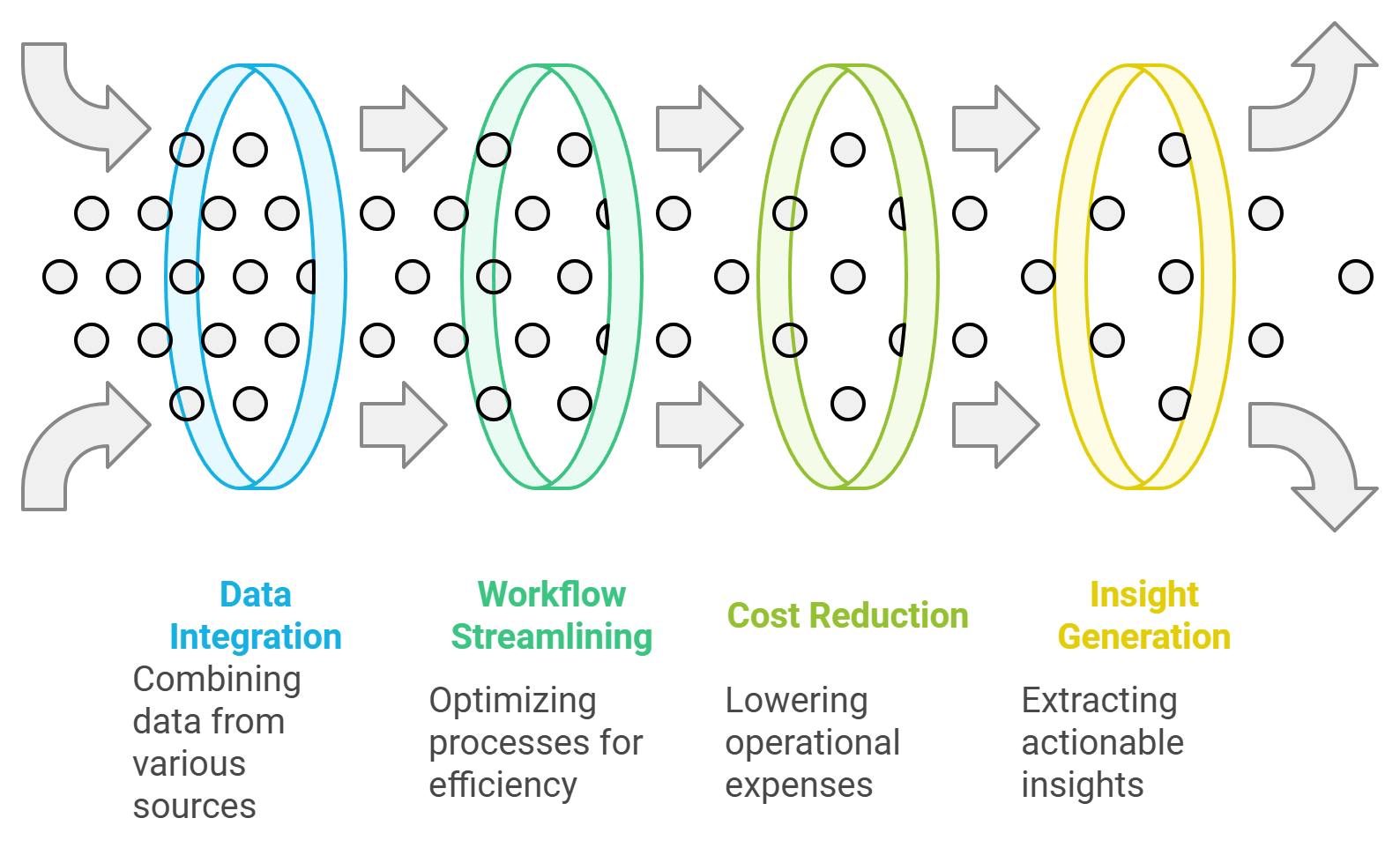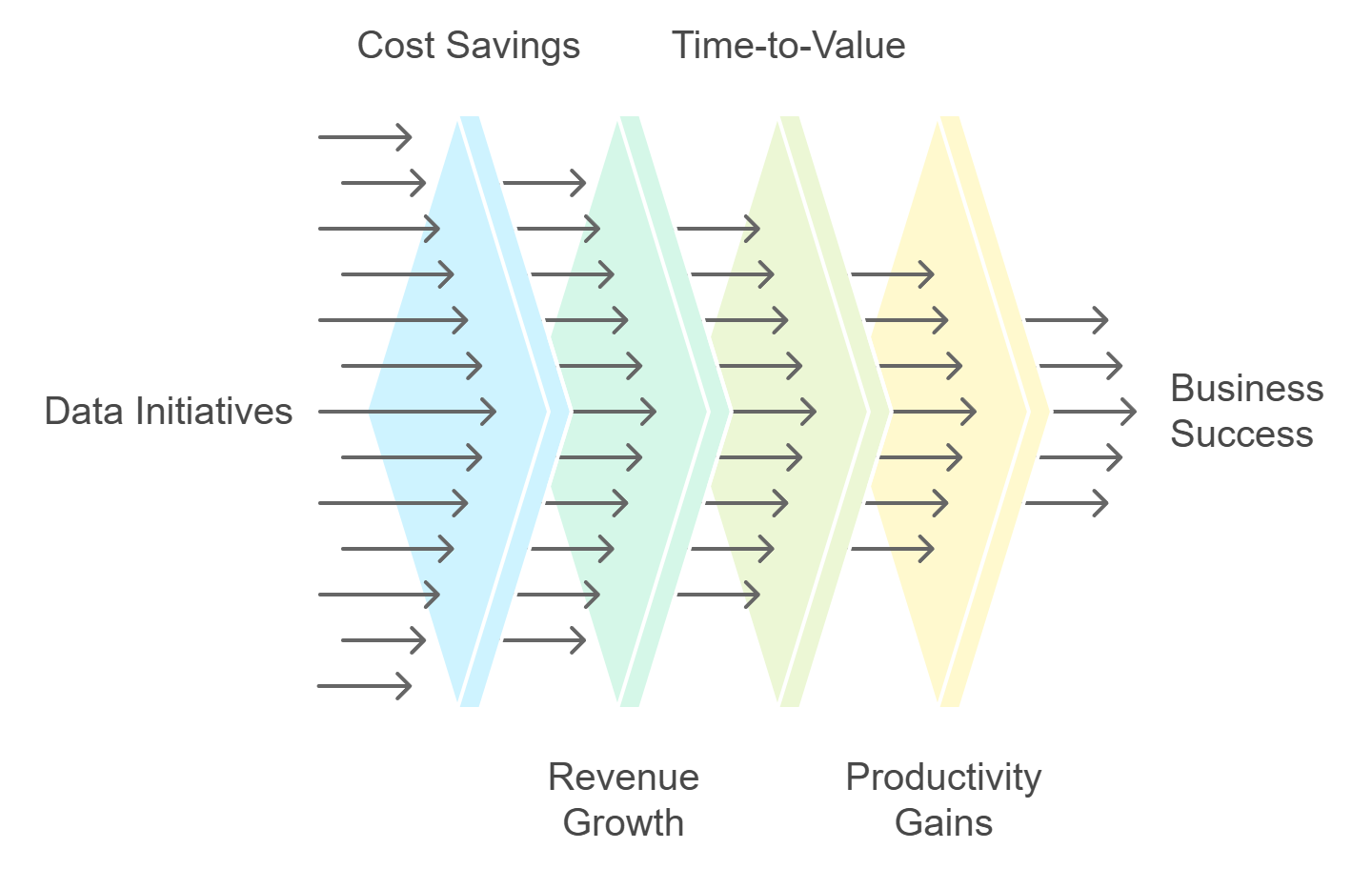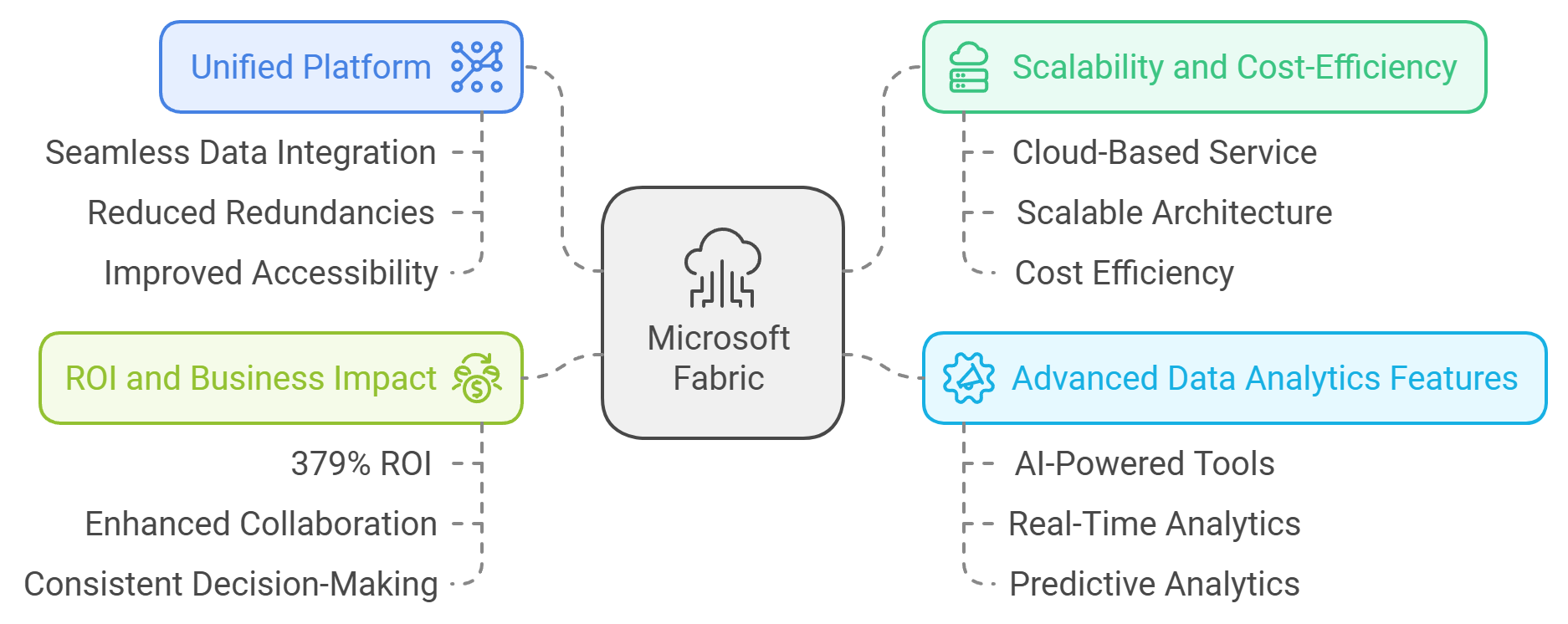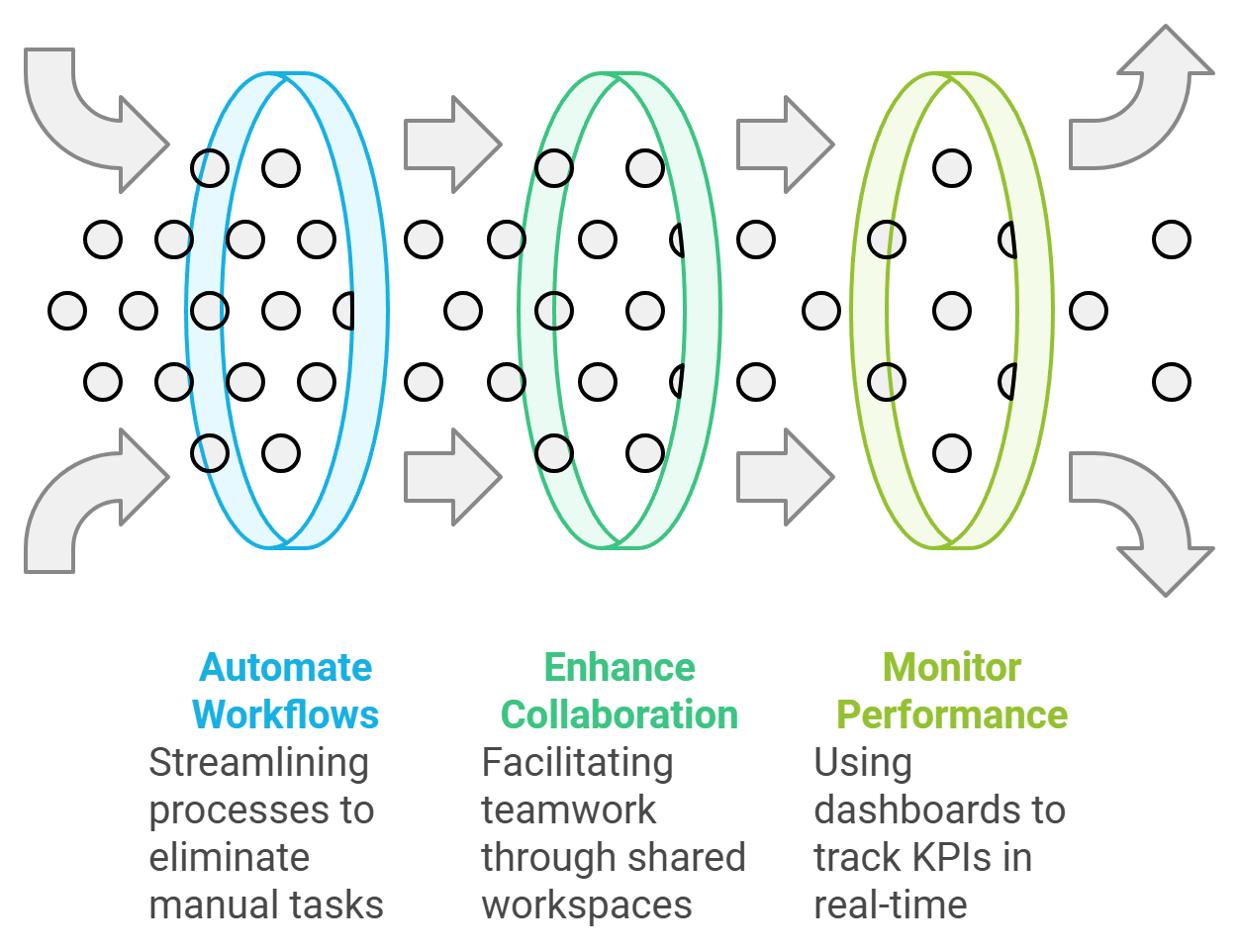Maximizing ROI with Microsoft Fabric Made Simple
In today’s data-driven world, harnessing the power of your data is essential for success. Microsoft Fabric plays a crucial role in the data revolution by empowering you to overcome common data challenges through a unified platform that simplifies data management and analytics. With its seamless integration across Microsoft services, it enables you to streamline workflows, reduce operational costs, and uncover actionable insights. A recent Forrester study revealed that businesses using Microsoft Fabric achieved an impressive 379% return on investment, highlighting the importance of maximizing ROI over three years. Microsoft Fabric’s role in the data revolution lies in its ability to transform raw data into meaningful outcomes, helping you stay ahead in a competitive landscape.

Key Takeaways
Microsoft Fabric can significantly enhance your data management and analytics, leading to a remarkable 379% return on investment over three years.
To measure ROI effectively, focus on key metrics such as cost savings, revenue growth, time-to-value, and productivity gains from your data initiatives.
Utilize Microsoft Fabric's data integration tools to automate workflows, saving time and reducing errors, which fosters a data-driven culture in your organization.
Leverage collaboration features within Microsoft Fabric to streamline workflows, enhance team efficiency, and ensure consistent access to data across your organization.
Monitor and measure performance using customizable dashboards in Microsoft Fabric to track key performance indicators and align data strategies with business objectives.
Adopting predictive analytics through Microsoft Fabric can help identify new revenue opportunities and enhance decision-making, positioning your business for growth.
The scalable architecture of Microsoft Fabric allows businesses to manage increasing data volumes efficiently, ensuring that your investment aligns with your growth ambitions.
Understanding ROI in Data Initiatives
Defining ROI in Data Projects
ROI, or return on investment, serves as a critical measure of success for any data initiative. It helps you evaluate the value generated from your data projects compared to the resources invested. To assess ROI effectively, you need to focus on specific metrics that reflect both financial and operational benefits.

Key metrics for measuring ROI in data analytics.
Cost Savings: Track reductions in operational expenses achieved through automation and streamlined workflows. For example, Microsoft Fabric reduces development time for new analytics by over 90%, which directly cuts costs.
Revenue Growth: Measure the increase in revenue driven by actionable insights from data. Predictive analytics, powered by platforms like Microsoft Fabric, can help identify new opportunities and boost sales.
Time-to-Value: Evaluate how quickly your data projects deliver measurable results. Businesses using Microsoft Fabric report a fast payback period, showcasing its efficiency.
Productivity Gains: Monitor improvements in team efficiency. Microsoft Fabric fosters collaboration between business analysts and IT teams, enabling faster decision-making and better outcomes.
By focusing on these metrics, you can clearly understand how your data initiatives contribute to your overall business success.
Challenges in Maximizing ROI from Data
Despite the potential of data projects, many organizations face obstacles that hinder their ability to achieve optimal ROI. Recognizing these challenges is the first step toward overcoming them.
High costs and inefficiencies in data management.
Managing data often involves significant expenses, from storage and processing to hiring skilled professionals. Fragmented systems and siloed data further increase inefficiencies. Microsoft Fabric addresses these issues by offering a unified platform that integrates Azure and Artificial Intelligence, reducing costs and improving productivity.
Misalignment between data strategies and business goals.
A common pitfall is the disconnect between data initiatives and organizational objectives. When data strategies fail to align with business goals, the insights generated may lack relevance or impact. Microsoft Fabric empowers a wider range of users to work with data, ensuring that insights are actionable and aligned with your company’s priorities.
By addressing these challenges, you can unlock the full potential of your data and maximize ROI. A platform like Microsoft Fabric simplifies this process, helping you achieve measurable results and stay competitive in today’s data-driven world.
How Microsoft Fabric Drives ROI

Unified Analytics for Data Integration
Managing data across multiple systems often creates silos that hinder efficiency. Microsoft Fabric eliminates these barriers by offering a unified platform for seamless data integration. This end-to-end analytics platform connects your data sources, enabling you to consolidate information in one place. By doing so, you can reduce redundancies and improve accessibility.
Chris, a data analytics expert, emphasized, "Adopting Microsoft Fabric could yield an astounding 379% return on investment for businesses, according to Forrester’s Total Economic Impact study." This highlights the transformative potential of integrating such technologies into your organization.
With Microsoft Fabric, you gain the ability to streamline workflows and enhance collaboration. Teams can access the same datasets, ensuring consistency and accuracy in decision-making. The platform’s cloud-based service further simplifies data management, allowing you to focus on deriving actionable insights rather than dealing with fragmented systems.
Scalability and Cost-Efficiency
Scaling your data operations to meet business demands often comes with high costs. Microsoft Fabric addresses this challenge by providing a cloud-based service that adapts to your needs. Its scalable architecture ensures that you only pay for the resources you use, making it a cost-efficient solution for businesses of all sizes.
The platform’s data processing capacity grows with your organization, enabling you to handle increasing volumes of data without compromising performance. This flexibility allows you to allocate resources effectively, ensuring that your investment aligns with your business goals. By reducing unnecessary expenses, Microsoft Fabric helps you achieve a higher return on investment.
Advanced Data Analytics Features
Microsoft Fabric empowers you to make better decisions through its advanced data analytics capabilities. The platform leverages AI-powered tools and real-time analytics to deliver insights that drive impactful outcomes. These features enable you to process large datasets quickly, uncovering trends and patterns that might otherwise go unnoticed.
Real-time insights allow you to respond to changes in the market promptly. For example, predictive analytics can help you identify emerging opportunities, giving you a competitive edge. The platform’s integration with AI ensures that your analytics processes are not only faster but also more accurate, enhancing the quality of your decisions.
By combining scalability, seamless data integration, and advanced analytics, Microsoft Fabric provides a comprehensive solution for maximizing ROI. Its ability to adapt to your business needs while delivering actionable insights makes it an indispensable tool in today’s data-driven world.
Practical Steps to Maximize ROI with Microsoft Fabric

Utilize Data Integration Tools
Efficient data integration is the foundation of any successful data-driven transformation. Microsoft Fabric simplifies this process by offering robust tools that automate data preparation and transformation. These tools eliminate manual tasks, saving you time and reducing errors. By automating workflows, you can focus on deriving actionable insights rather than spending hours cleaning and organizing data.
For example, Microsoft Fabric’s seamless integration capabilities allow you to connect multiple data sources into a unified platform. This ensures that your data remains consistent and accessible across your organization. A unified approach not only enhances productivity but also supports strategic decision-making by providing accurate predictions based on reliable data.
“Forrester’s Total Economic Impact study revealed that businesses leveraging Microsoft Fabric achieved a 379% ROI,” highlighting the immense value of adopting automated data solutions.
By utilizing these tools, you can foster a data-driven culture within your organization, enabling teams to collaborate effectively and make informed decisions.
Optimize Workflows with Collaboration Features
Streamlined workflows are essential for maximizing ROI in data-driven initiatives. Microsoft Fabric offers collaboration features that enhance project management and improve team efficiency. Shared workspaces allow multiple users to access and work on the same datasets simultaneously, ensuring consistency and reducing redundancies.
These shared environments promote transparency and accountability. Teams can track progress, share insights, and align their efforts with organizational goals. This collaborative approach accelerates the pace of data-driven transformation, helping you achieve measurable results faster.
Microsoft Fabric’s cloud-based architecture further supports collaboration by enabling remote access. Whether your team works in the office or remotely, they can stay connected and contribute to ongoing projects seamlessly. This flexibility ensures that your business intelligence efforts remain uninterrupted, even in dynamic work environments.
Monitor and Measure Performance
Tracking performance is crucial for understanding the impact of your data-driven initiatives. Microsoft Fabric provides intuitive dashboards that help you monitor key performance indicators (KPIs) in real time. These dashboards offer a clear view of your data, enabling you to identify trends, measure progress, and make adjustments as needed.
By leveraging these tools, you can ensure that your predictive analytics system delivers accurate predictions and actionable insights. Monitoring KPIs also helps you align your data strategies with business objectives, ensuring that every initiative contributes to your overall success.
Dashboards in Microsoft Fabric are customizable, allowing you to focus on metrics that matter most to your organization. Whether you aim to improve operational efficiency, drive revenue growth, or enhance customer satisfaction, these tools provide the insights needed to achieve your goals.
“Businesses using Microsoft Fabric report faster payback periods and significant cost savings,” according to Forrester’s study. This underscores the importance of monitoring performance to maximize ROI.
By integrating these practical steps into your data-driven initiatives, you can unlock the full potential of Microsoft Fabric. Its advanced analytics capabilities, combined with seamless integration and collaboration features, empower you to drive strategic decision-making and achieve transformative results.
Real-World Use Cases
Enhancing Operational Efficiency
Reducing costs and improving decision-making with unified analytics.
Operational efficiency plays a vital role in achieving sustainable growth. Microsoft Fabric empowers you to streamline processes by unifying your data across various systems. This unified approach eliminates redundancies and reduces the time spent on manual tasks. By consolidating data into a single platform, you can access accurate and consistent information, enabling better decision-making.
Retailers, for instance, have leveraged Microsoft Fabric to optimize inventory management and forecast demand. By analyzing customer buying patterns and conducting behavior analysis, they have reduced overstocking and minimized waste. These improvements not only cut costs but also enhance customer satisfaction by ensuring product availability.
A Forrester study revealed that businesses using Microsoft Fabric achieved a 379% return on investment. This underscores the platform's ability to drive financial efficiency while delivering actionable insights.
With Microsoft Fabric, you can transform your operations into a well-oiled machine, reducing expenses and improving decision-making through advanced analytics.
Driving Revenue Growth
Using predictive analytics to identify new opportunities.
Revenue growth hinges on your ability to uncover new opportunities. Microsoft Fabric equips you with predictive analytics tools that analyze historical data and market trends. These tools help you identify patterns and predict future outcomes, giving you a competitive edge.
For example, retailers have used Microsoft Fabric to conduct targeted marketing strategies. By understanding customer preferences and purchasing behaviors, they have created personalized campaigns that drive sales. Predictive analytics also enables you to anticipate market demands, ensuring that your products or services align with customer needs.
"Businesses leveraging Microsoft Fabric report significant revenue growth due to its advanced analytics capabilities," according to industry experts. This highlights the platform's potential to transform raw data into valuable financial forecasting insights.
By adopting predictive analytics, you can position your business for success, tapping into new revenue streams and staying ahead of competitors.
Scaling Data Operations
Supporting business growth with scalable solutions.
As your business grows, managing increasing volumes of data becomes a challenge. Microsoft Fabric addresses this by offering scalable solutions that adapt to your needs. Its cloud-based architecture ensures that you can handle large datasets without compromising performance.
Companies have reported seamless scalability with Microsoft Fabric, allowing them to expand their operations without incurring excessive costs. The platform's pay-as-you-go model ensures that you only invest in the resources you need, making it a financially efficient choice.
For growing businesses, scalability is essential for maintaining momentum. Microsoft Fabric supports this growth by providing tools that simplify data management and analytics. Whether you're expanding into new markets or launching new products, the platform ensures that your data operations keep pace with your ambitions.
A Forrester study highlighted the financial benefits of Microsoft Fabric, noting its ability to support business growth while delivering a 379% return on investment.
By leveraging scalable solutions, you can future-proof your data operations and position your business for long-term success.
Microsoft Fabric offers a unified platform that simplifies data management and analytics, helping you in maximizing ROI on your data initiatives. By addressing inefficiencies, streamlining workflows, and integrating advanced analytics, it empowers you to achieve measurable results. Its scalable design adapts to your evolving needs, ensuring maximized ROI for businesses of all sizes. With Microsoft Fabric, you can transform complex data into actionable insights, driving impactful business outcomes. Explore this comprehensive solution to unlock the full potential of your data and stay ahead in today’s competitive landscape.
See Also
Maximizing Business Insights Through Microsoft Fabric Solutions
Transforming Data Management with Microsoft Fabric Innovations
Seamlessly Merging Microsoft Fabric Into Your Data Framework
Essential Microsoft Fabric Features for Data Experts to Explore
Exploring Data Transformation with Microsoft Fabric and Christopher Wagner
